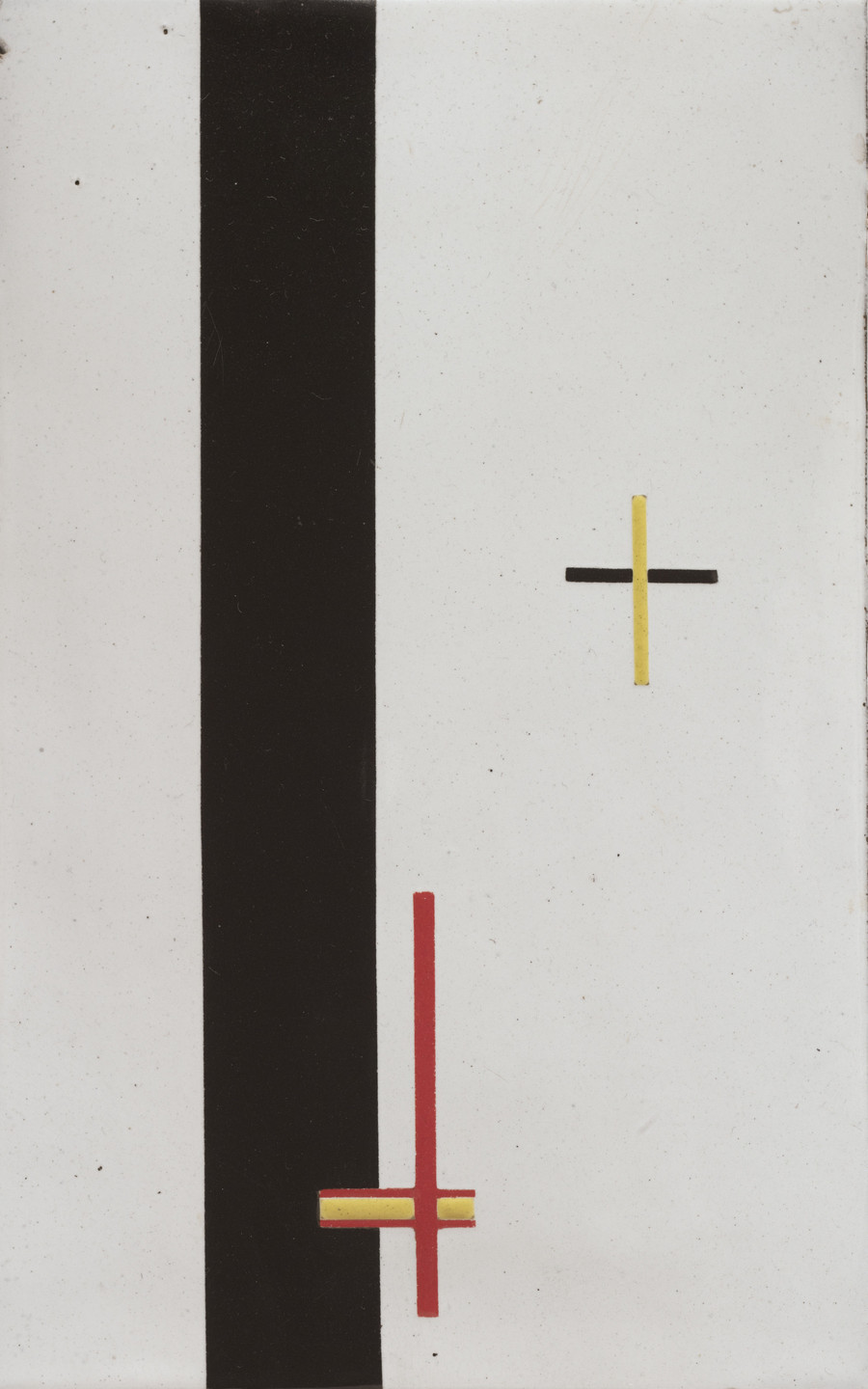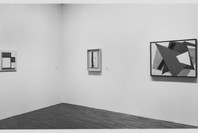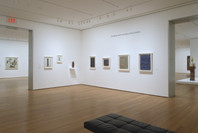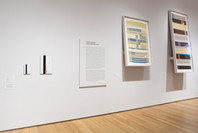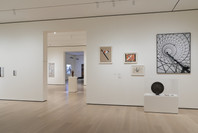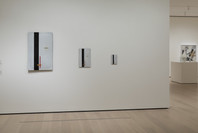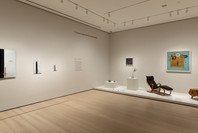These works were produced by an enamel factory in Weimar, Germany, according to instructions given by the artist. Moholy-Nagy later wrote that he placed the order by telephone, thus providing the paintings with their unofficial title. While the three works share an identical abstract, geometric composition, EM 1, EM 2, and EM 3 were made at large, medium, and small scale, respectively. Each painting’s glossy enamel surface features a single strip of black that extends from top to bottom and two abstract shapes formed by lines of various thicknesses that intersect perpendicularly.
After encountering the work of the Russian avant-garde at an exhibition in Berlin in the early 1920s, Moholy-Nagy was persuaded by these artists’ belief that a revolutionary society demanded a radically new artistic language. He incorporated these ideas into his teaching at the Bauhaus, the influential German school of art, architecture, and design founded in Weimar in 1919 whose curriculum embraced modern technology as integral to art. By rejecting unique, handmade artwork in favor of serial mechanical production in his “telephone pictures,” Moholy-Nagy emphasized the role of the modern artist as a producer of concepts rather than a craftsman physically involved in the making of the work.
Publication excerpt from MoMA Highlights: 375 Works from The Museum of Modern Art, New York (New York: The Museum of Modern Art, 2019)
This artwork was made in a factory from enameled metal sheets, a material that is more often used for plates, bowls, and cups. The artist, László Moholy-Nagy, liked to tell a story about how he made them: he telephoned the factory, he said, and described the artworks he wanted the workers to create. He believed that art is the idea of an object, not the making of it. Think of a creative idea. How would you make it come to life?
Kids label from 2019
